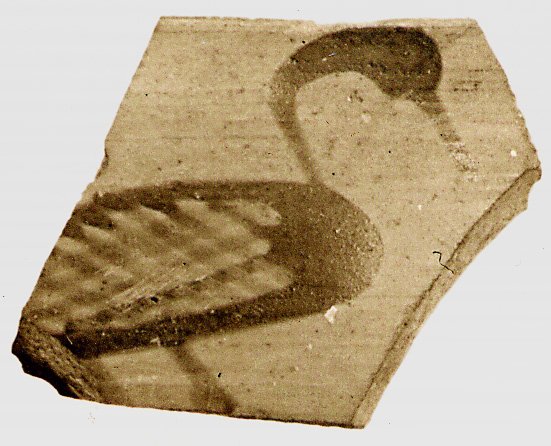
Fragment of a Rhodian Bird-Bowl
Classical Antiquities
| Date | late 7th century B.C. |
|---|---|
| Object type | vessel |
| Medium, technique | hammered, cast, bronze |
| Dimensions | height: 41.5 cm |
| Inventory number | 2004.137.A |
| Collection | Classical Antiquities |
| On view | Museum of Fine Arts, Basement Floor, Classical Antiquity, Hellas – Italy – Rome |
The Budapest bronze hydria is an outstanding piece of archaic Greek bronze craft. Judging from the vase form, the decorating figures and the technical features of the vessel, it must have been made in one of the great artistic centres of the Greek world, almost certainly in the 7th century B.C. The location and time of its making is difficult to determine.
Together with Athens, Corinth, Argos and Samos, Sparta was one of the main centres of bronze craft in this period. Large quantities of bronze ornaments featuring human and animal figures were made here from the last decade of the 7th century up to the end of the 6th century B.C. A particularly important branch of Spartan bronze craft was the making of vessels, particularly of large decorative storage and mixing vessels (hydrias and craters). These were made mostly for export, and so, many bronze vessels of Laconian style have been found as far as the “overseas regions” of the time, such as Italy and the Balkans, including areas inhabited by other than Greek population. The furthest point at which an (almost certainly) Spartan bronze vessel was found is Ártánd in Hungary, where a hydria turned up in the excavation of a Scythian royal grave (Budapest, Hungarian National Museum). The Ártánd hydria is considered to be a typical early example of Spartan bronze industry from the 7th century B.C., and there is evidence to suggest that it was the starting point of a series of similar Spartan bronze vessels. The Budapest vase, the provenance of which is unknown, is very close to the Ártánd hydria in proportion and outline, although it may be somewhat older.
Its vertical handle is adorned with figural decoration: at the top, two human heads at the end of the arms curving out from under the edge, and at the bottom of the handle, a lion’s head flanked by two snakes. The modelled details, first of all the type of the female (?) head, are closely related to 7th century B.C. Greek sculptural tradition, the so-called Daedalic idiom, while the animal motifs adorning the bottom of the handle suggest an experimental stage in search of a final form of expression. Other evidence of its early origin comes from the lion head motif, later on becoming a frequent and routine element of Spartan bronze vessels, which appears here in a version whose clumsiness and inchoate proportions betray a lack of conventional patterns.
The diffusion of archaic bronze relics reveals that several workshops produced similar objects in several different cities, independently and also in rivalry with each other. Each centre and community developed its stylistic variations – many still recognisable today – for domestic objects and artistic forms, so that archaeologists can often identify the production site of an artefact on stylistic grounds. Judging from the technical details of this hydria, it may with a high degree of probability be placed in Sparta, but examination of the human heads suggests that the sculptural models of this detail can rather be found in the art of Samos. Given the close political and cultural links between Sparta and Samos in the early archaic period, it seems possible that Samian craftsmen might have played a part in the beginnings of Spartan bronze industry.
Following ÁGNES BENCZE
This record is subject to revision due to ongoing research.